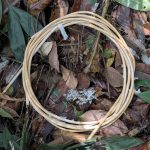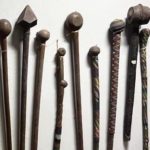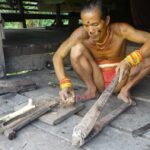Hadzabe axes are part of the standard outfit of every Hadzabe man living in remote areas. This outfit consists of his bow, a bunch of arrows of various types, a firestick, his knife, and the axe. Additionally, he will carry a roll of dry antelope ligament, antidote-wood for snakebites, and a snakecharm in his pockets. This pocket will also contain his smoking set, which could be a pipe and tobacco, or snuff, or rolling paper and tobacco.
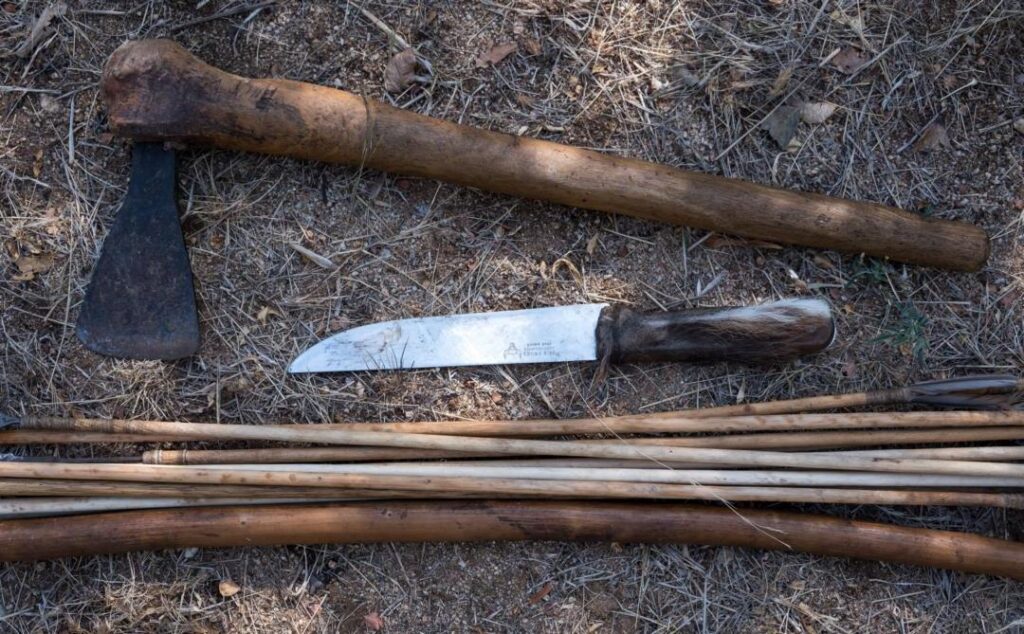
These items are essential for these hunter-gatherers. They do not need other equipment, as alternative ways exist to fulfill their needs. If there is no cooking pot, they roast the meat and tubers. They sleep without a blanket in the open if there is no shelter. Water can be slurped from whatever water sources are there without any cleaning. Nevertheless, all the Hadzabe we met appeared to be very fit.
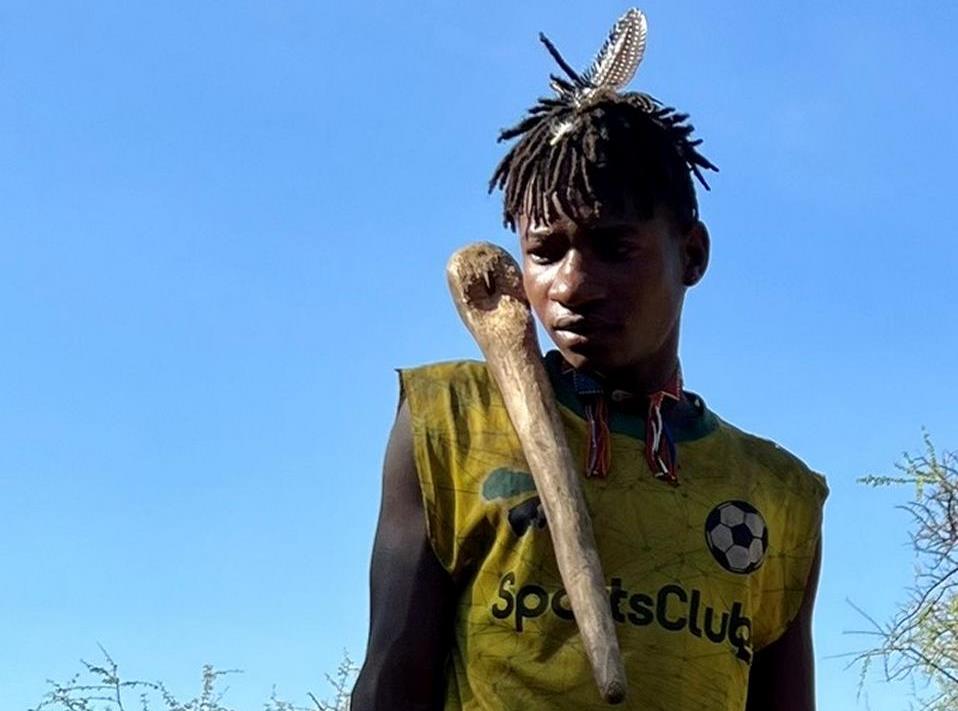
The biggest problems for Hadzabe people are accidents, such as falling from trees or losing an eye when struggling with an animal. When asked about the biggest dangers in their lives in the Yaeda South area of Lake Eyasi in Tanzania, they answered that snakes were the first, followed by elephants, lions, and leopards.
I must mention that these are the dangers experienced by the remote-living Hadzabe people, who still live the traditional way. Hadzabe people serving the tourist entertainment circus face a greater danger of getting killed in a traffic accident.
Materials used for Hadzabe axes
Iron blade
Like all axes, only two materials are used: an iron blade and a wooden handle. See also the article about the axes of the Mentawai people on this website. The Datoga people produce these blades as they are pastoralists and skilled blacksmiths. They sell them to the Hadzabe against honey. The relationship between these two tribes is quite a close one. Datogas can graze their cattle in Hadza territory from July 1st to December 31st every year, and Hadzabe people use them as their primary suppliers for various materials. They appear to be friends, but there are many underlying sentiments between the Hadzabe and Datoga people.
Wooden handle from Terminalia brownii
After the blade was traded in, the Hadza man would craft the wooden handle himself. According to D. Peterson (2013), two wood species are preferred for the handle. One is a species of the Combretaceae family (Terminalia brownii),
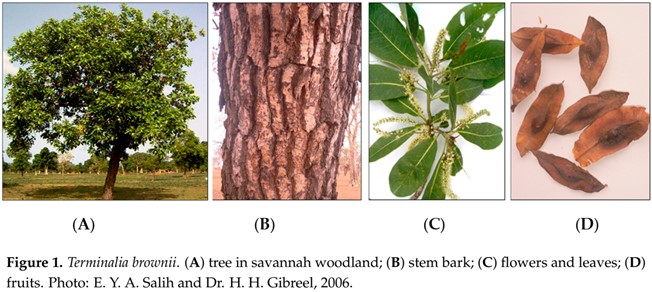
This yellow-brown, relatively hard wood resists boring insects and termites. Axe handles are also made from this wood in Zaire, Uganda, Kenya, and Ethiopia. In Tanzania, grain mortars are crafted by tribes other than Hadzabe. The Hadza name for this wood is ‘Gobandako’.
Wooden handle from Lonchocarpus eriocalyx
The other wood species is within the Legume family (Lonchocarpus eriocalyx). Its former genus name was Philenoptera.
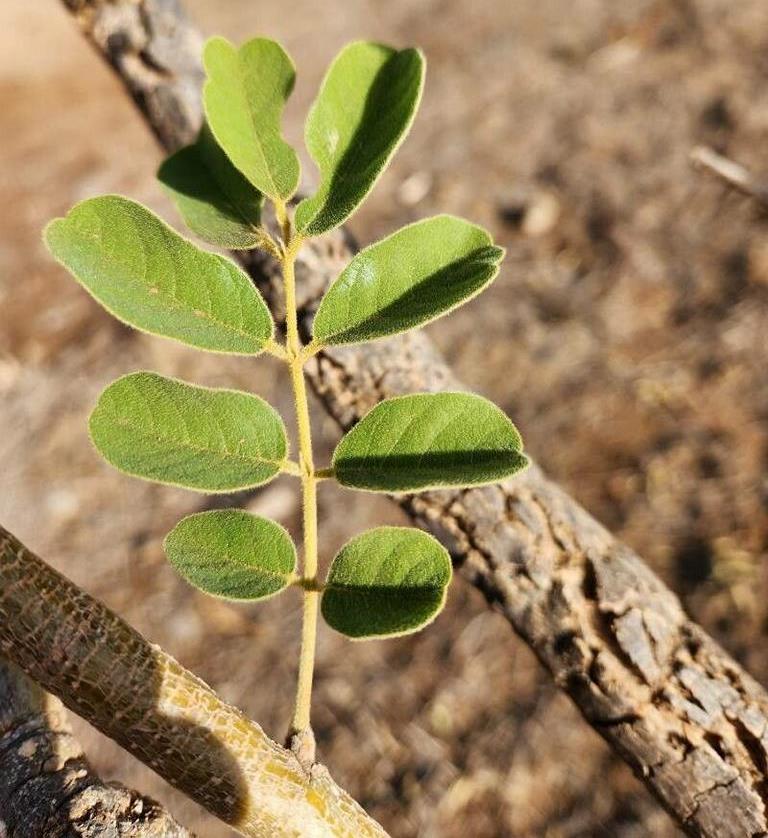
The heartwood is yellowish-brown to dark reddish-brown, striped with rather fine uniform laminations of a lighter color. It is sharply demarcated from the thick band of yellowish sapwood. The texture is moderately coarse, with grain straight to irregular or interlocked. Despite its hardness, the wood is not particularly difficult to work. The Hadzabe people name this wood ‘Mpuneko’.
Both wood species for the handle are endemic to the Hadzabe people’s area.
Dimensions of Hadzabe axes
As every wooden handle is a one-off piece, it is rather challenging to state the exact dimensions. The wooden handle is typically 50 – 65cm / 19.7 – 25.6 ’’ long.
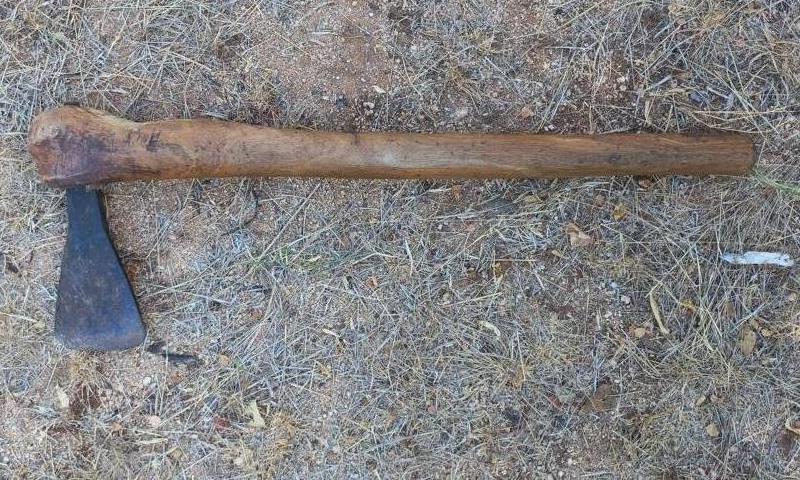
The handle is slightly tapered from the lower end up to the knob holding the blade. Its diameter is around 5cm / 2’’ wide in the middle. Some axe handles are seen to be tapered more than others, but at least the upper third part is gradually becoming thicker towards the blade-holding knob.
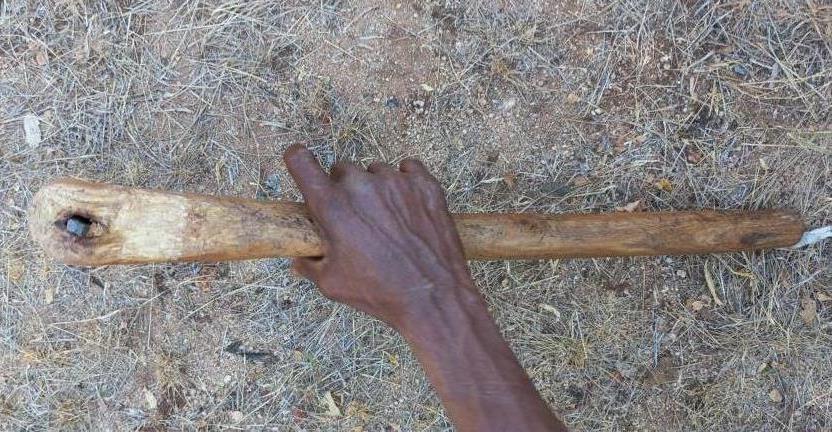
The hole for holding the blade is cut and burnt into the handle to remove the blade, but it holds tight for regular hacking jobs. Due to the hole’s primitive carving and burning methods, turning the blade horizontally to use the tool as an adze is impossible.
What are Hadzabe axes used for?
Hadzabe axes are mainly used for cutting saplings for various applications, chopping down trees, opening tree trunks for honey, slitting Baobab bark for inserting wooden pegs, and butchering large game animals. There was never a need to make canoes or wooden trays, so the axe is unnecessary as an adze.
Honey harvesting
To collect honey from stingless bee species that do not live underground, both men and women cut open the tree trunk and collect honey and larvae. Women will take the axe of their husbands for that work.
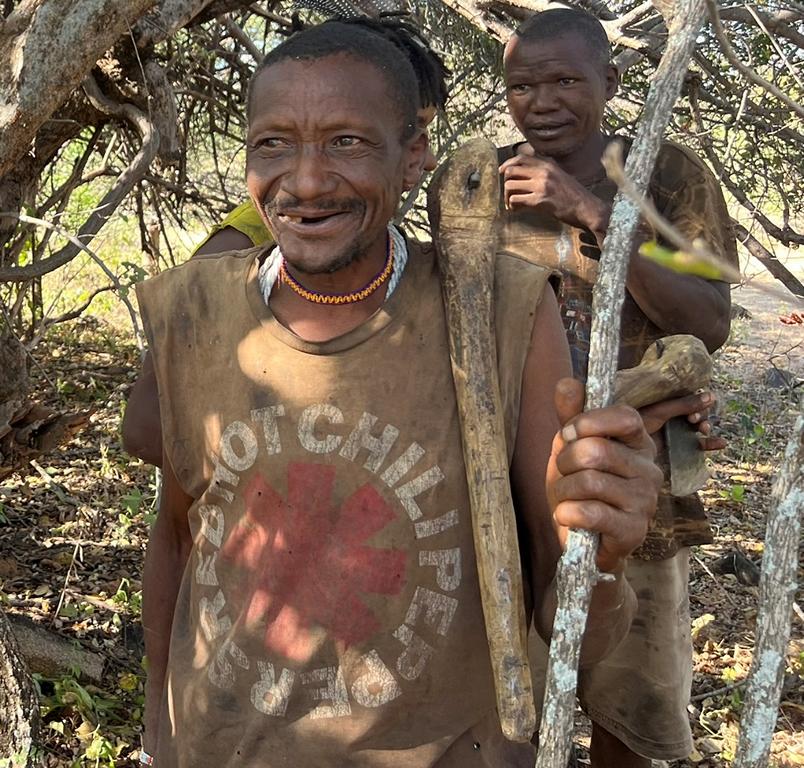
The axe is used to cut long saplings from the White Raisin Bush (Grewia bicolor) to collect honey bee combs on Baobab trees. These saplings are then cut into smaller sections and sharpened on one end to be used as wooden pegs for climbing. No old and existing pegs are used to climb Baobabs, as there is a danger that they will break out of the bark.
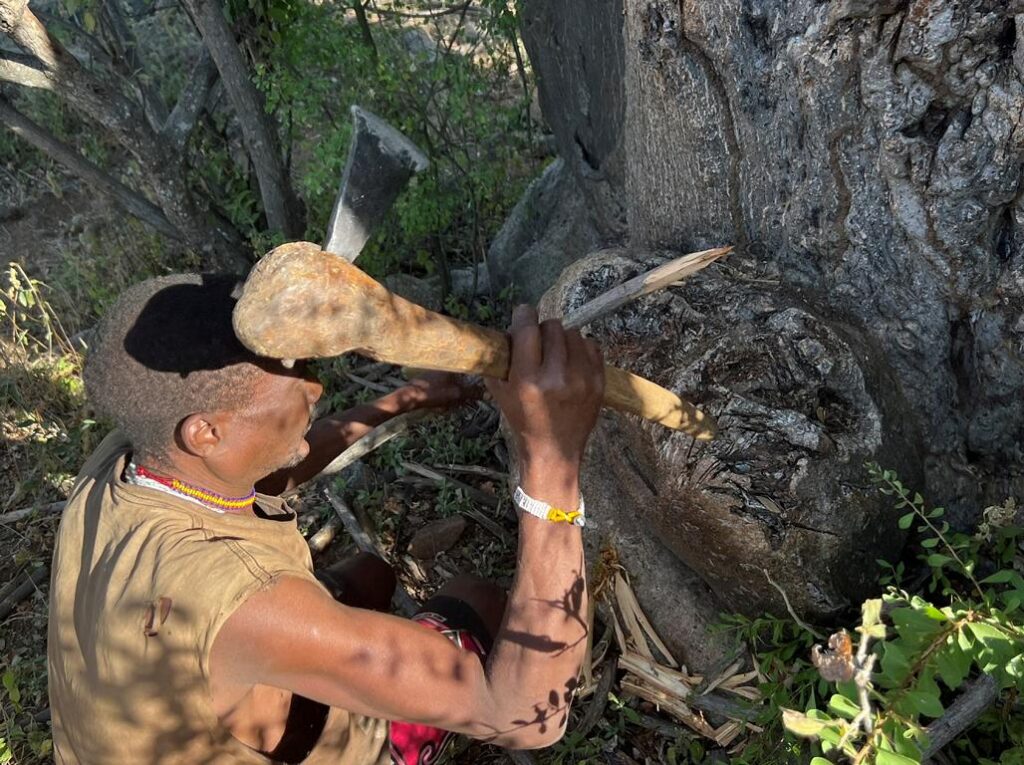
Climbing the Baobab trees is done in a sequence of firstly cutting a slit in the bark with one blow of the axeblade and, after that, hammering a peg with the backside of the axe into this slit. This is done repeatedly until the beehive is reached.
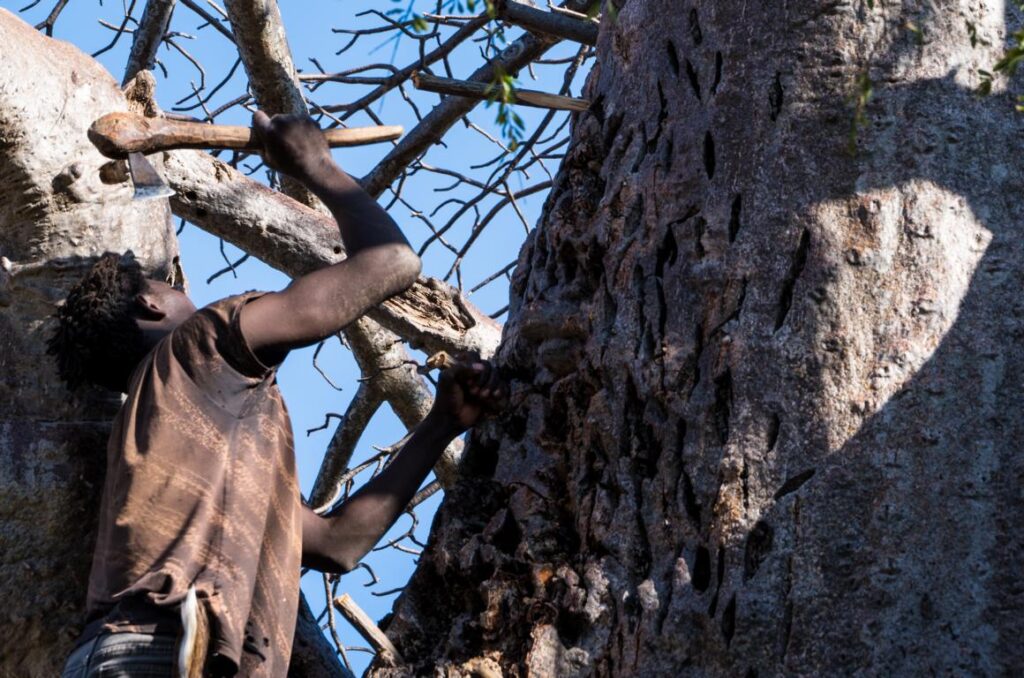
It is, therefore, necessary that the blade fits tightly in the knob of the handle. Furthermore, this knob has to be large and chunky enough on the backside to drive pegs deep into the pre-cut slits of the bark. Pegs are not held in the wood behind inside the tree, as the Baobab’s wood’s texture is spongy and watery.
Lessons learned from Hadzabe Axes:
- Hadzabe people trade in iron axeblades from the Datonga tribe.
- A Terminalia- and a Lonchocarpus species’ wood is used for handles.
- Hadzabe axes are chunky and rough affairs, suitable for the demanding applications they are destined for.
- These axes are mainly used for chopping trees and saplings and setting pegs onto Baobab trees.
Additional information
My book ‘Hadzabe Survival Skills‘ offers more skills, knowledge, tools, and techniques for the Hadzabe people’s life in their natural environment. It is available on Amazon.com and Amazon’s regional websites.
.



